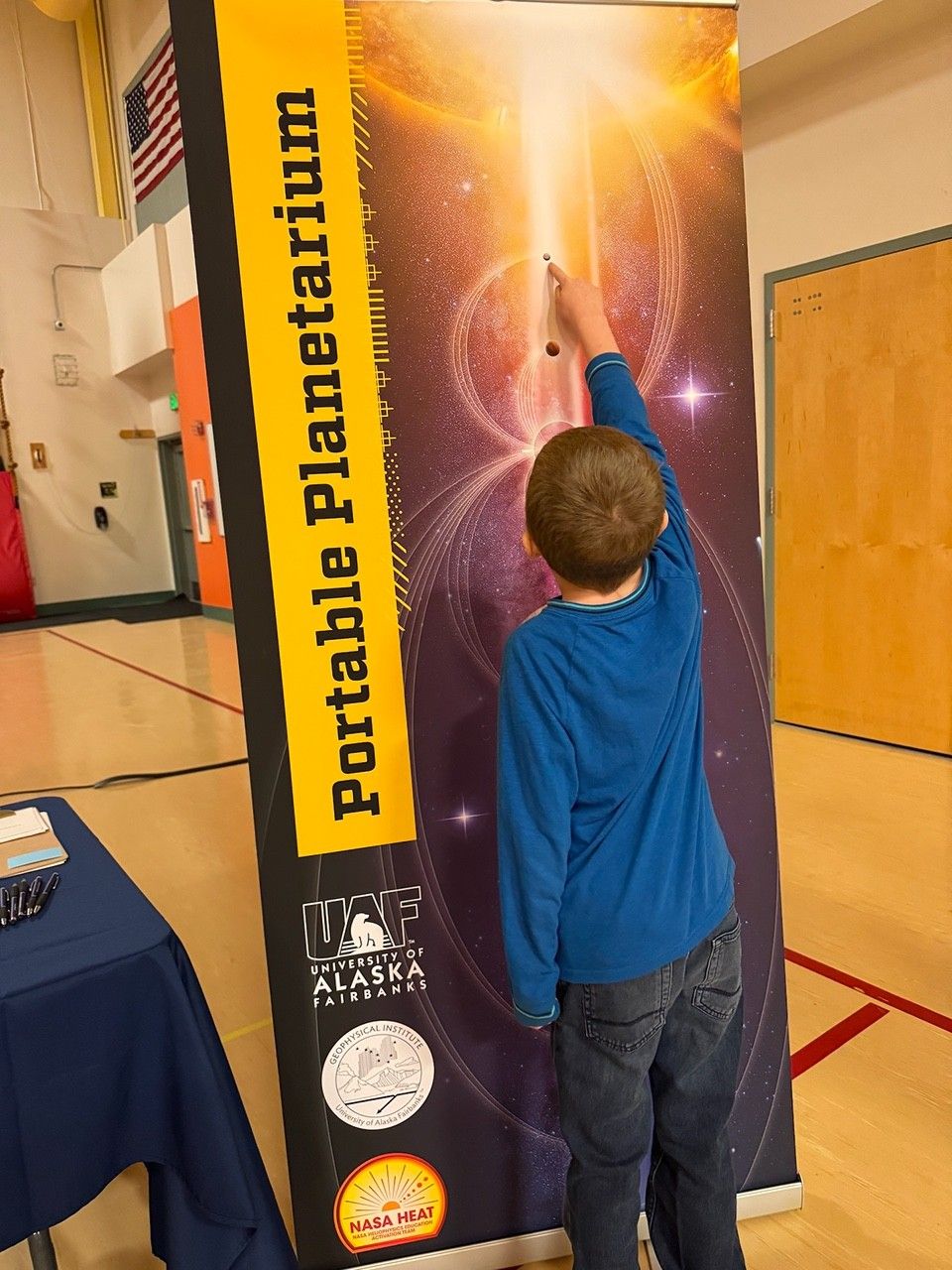From January through June 2025, the Education Outreach Office at the University of Alaska Fairbanks Geophysical Institute (GI) continued its mission of bringing science to life by delivering the magic of its portable planetarium to communities across Alaska. This year, they reached over 1,807 students, educators, and participants through engaging, interactive astronomy experiences.
The portable planetarium is more than just a dome. It’s a getaway to curiosity, discovery and connection. Especially in Alaska’s long, cold winters, the dome offers a warm and welcoming space where learners of all ages can look up, wonder, and learn together. After experiencing the planetarium, feedback from students across the state reflects increased excitement about space, science, and their own place in the universe.
Each session begins with a warm introduction, a safety briefing, and a land acknowledgement. Participants experience constellations, planets, and space science concepts through dynamic storytelling and exciting visuals. The presentations connects ancient skywatching traditions with modern science, reminding students that long before the internet, the stars were a source of direction and knowledge. The presentation begins on Earth, exploring the State of Alaska, discussing the moon’s phases, and then, journeys outward to Mars, the last rocky planet, before reaching the gas giants. A standout moment of experience is the “Planet Walk” — an interactive journey from the Sun through the solar system. Learners leave with a new favorite word: ‘heliophysics,’ the science of the Sun and its influence on the solar system.
Knowledgeable presenters bring science to life with energy, empathy, and enthusiasm, engaging diverse audiences and making the event a memorable and impactful experience. Soumitra Sakhalkar, for example, is a GI graduate student researcher studying remote sensing of permafrost regions. Another presenter, Austin Smith, is a GI graduate student researcher in space physics. Several GI Communications staff members also contribute to the program’s success with logistics and technology support, crowd control and more.
This program is funded in part by the NASA Heliophysics Education Activation Team, which is part of NASA’s Science Activation Portfolio. Learn more about how Science Activation connects NASA science experts, content, and experiences with community leaders to do science in ways that activate minds and promote deeper understanding of our world and beyond: https://science.nasa.gov/learn/about-science-activation/. The remainder of the funding was generously supported by schools and organizations requesting the planetarium program.
